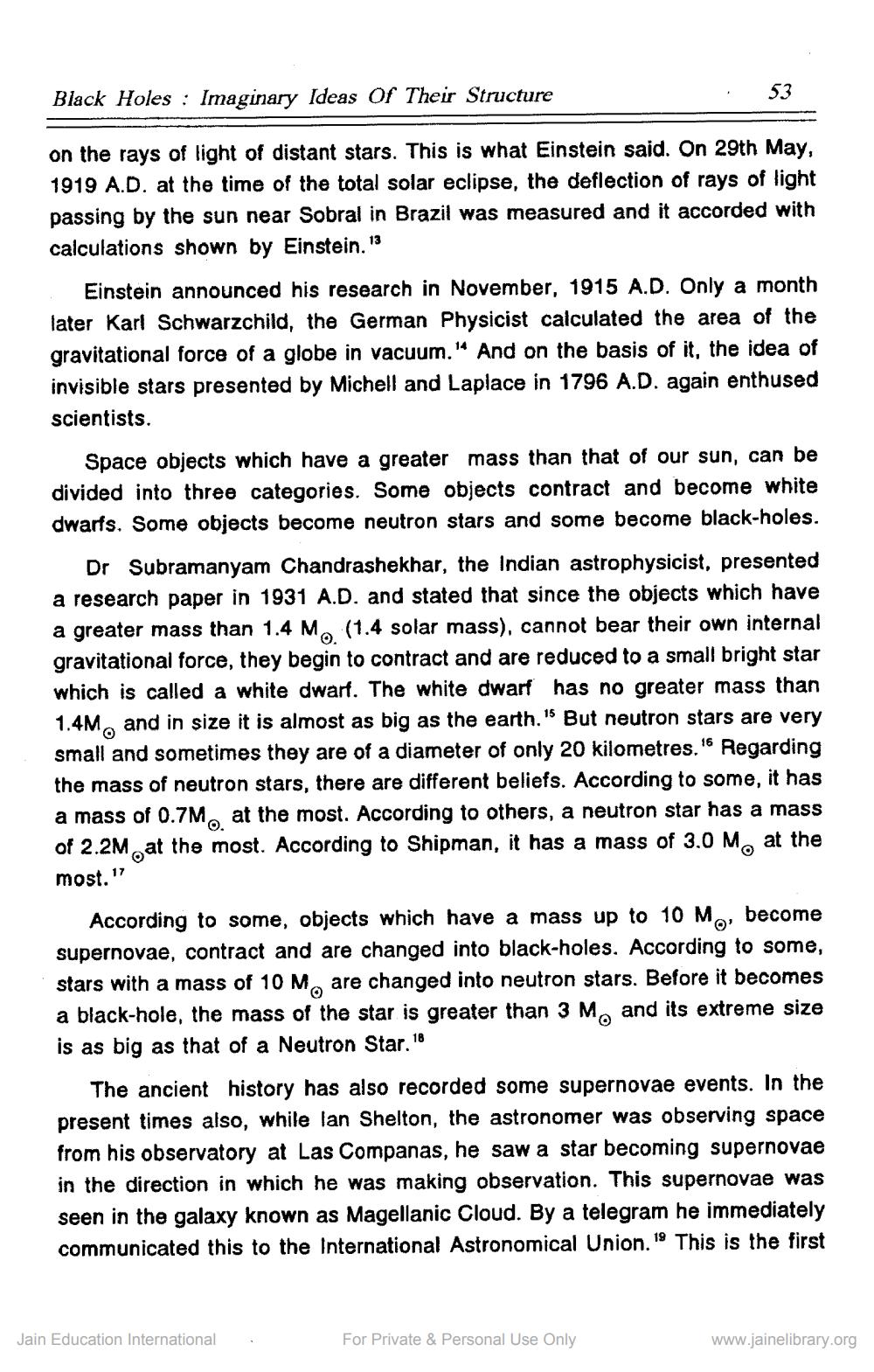________________
Black Holes: Imaginary Ideas Of Their Structure
on the rays of light of distant stars. This is what Einstein said. On 29th May, 1919 A.D. at the time of the total solar eclipse, the deflection of rays of light passing by the sun near Sobral in Brazil was measured and it accorded with calculations shown by Einstein.
13
53
Einstein announced his research in November, 1915 A.D. Only a month later Karl Schwarzchild, the German Physicist calculated the area of the gravitational force of a globe in vacuum." And on the basis of it, the idea of invisible stars presented by Michell and Laplace in 1796 A.D. again enthused scientists.
Space objects which have a greater mass than that of our sun, can be divided into three categories. Some objects contract and become white dwarfs. Some objects become neutron stars and some become black-holes.
0.
Dr Subramanyam Chandrashekhar, the Indian astrophysicist, presented a research paper in 1931 A.D. and stated that since the objects which have a greater mass than 1.4 M (1.4 solar mass), cannot bear their own internal gravitational force, they begin to contract and are reduced to a small bright star which is called a white dwarf. The white dwarf has no greater mass than 1.4M and in size it is almost as big as the earth." But neutron stars are very small and sometimes they are of a diameter of only 20 kilometres. 16 Regarding the mass of neutron stars, there are different beliefs. According to some, it has a mass of 0.7M at the most. According to others, a neutron star has a mass of 2.2M at the most. According to Shipman, it has a mass of 3.0 M at the most.
O
O.
O
17
According to some, objects which have a mass up to 10 M, become supernovae, contract and are changed into black-holes. According to some, stars with a mass of 10 M are changed into neutron stars. Before it becomes a black-hole, the mass of the star is greater than 3 M and its extreme size is as big as that of a Neutron Star.18
O
O
The ancient history has also recorded some supernovae events. In the present times also, while lan Shelton, the astronomer was observing space from his observatory at Las Companas, he saw a star becoming supernovae in the direction in which he was making observation. This supernovae was seen in the galaxy known as Magellanic Cloud. By a telegram he immediately communicated this to the International Astronomical Union. 19 This is the first
Jain Education International
For Private & Personal Use Only
www.jainelibrary.org




